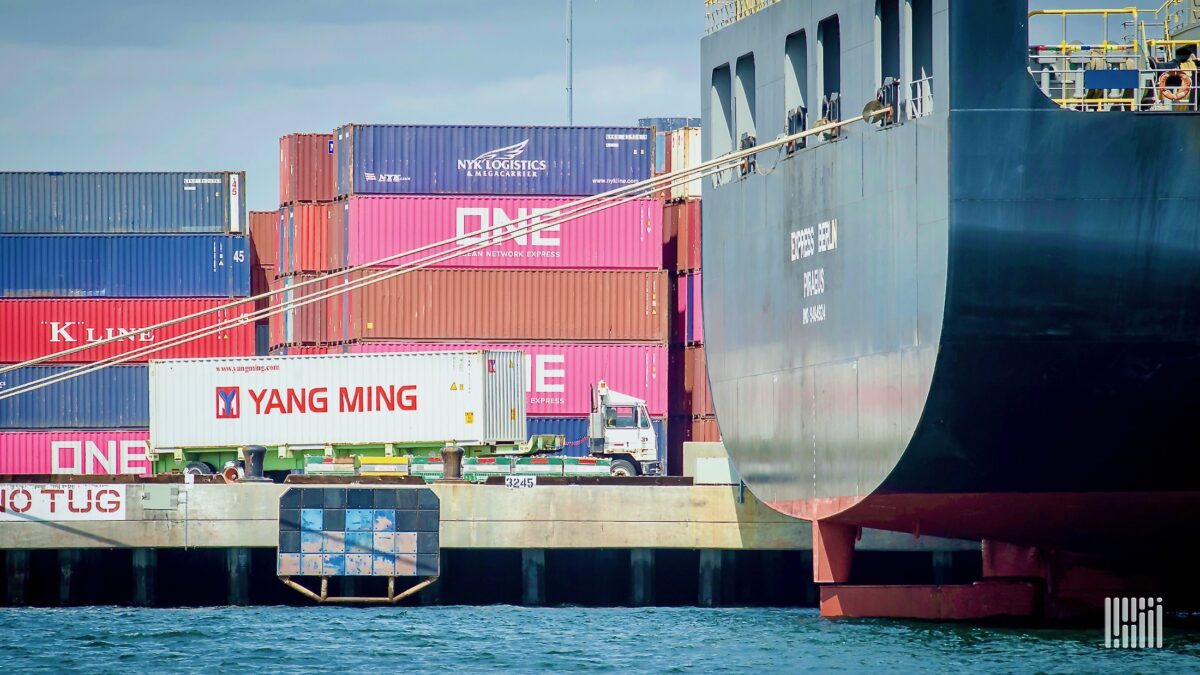
A pair of major banks are sounding the alarm on weak U.S. imports.
This week, analysts from J.P. Morgan and Bank of America warned that U.S. imports have declined in recent weeks. The main culprits include weaker U.S. consumer activity and strict lockdowns in China.
Bank of America noted imports “declined broadly,” particularly out of China. J.P. Morgan’s Europe equity team affirmed FreightWaves’ Tuesday analysis of inbound ocean containers, which found container imports dropped by more than 36% since May 24. The bank noted that global freight rate indices are down 20% year to date.
But this decline should be noted in the larger context of unusually high container volumes, J.P. Morgan’s equity team wrote in the Wednesday note.
Volume on the Asia-North America lane was up 43% from 2019, according to the bank. That’s higher than expected, but because volume is being concentrated in that one lane, it’s contributing to heavy shipping congestion.
Related:
Read: Congress is voting soon to overhaul the shipping industry. Here’s everything you need to know.
Read: US import demand is dropping off a cliff
Analysts projected that lower U.S. volume in the Asia-North America corridor could help free as much as 12% of ship capacity that’s stuck in congestion.
China’s overall share of US imports has seen unusual volatility, says Bank of America
The resurgence of the Asia-North America lane comes during a period of extreme trade volatility between the U.S. and China. Over the past few years, the U.S. has imported more and more goods from China, wrote Bank of America’s economics team.
But in April, the total U.S. trade balance narrowed for the first time since last October, with China’s lockdowns playing a major role, according to Bank of America’s Thursday note.
Over the past 10 years, on average, Chinese goods have accounted for one-fifth of U.S. imports. In 2020, that figure dipped below 14% amid the U.S.-China trade war. Since then, the share of U.S. imports from China has been erratic, rising as high as 23% at one point in 2020 before experiencing a series of pullbacks.
April marked the most recent decline. That month, total U.S. imports fell by 7.9% from March, with imports from China declining by 11.8%. As of April, China accounted for about 17% of U.S. imports.
Watch: Is US import demand dropping off of a cliff?
Bank of America attributed the slowdown to China’s strict COVID-19 lockdown measures in recent months. Those policies put a sizable dent in Chinese factory production, which in April fell to its lowest level since February 2020. Analysts also wrote that lags from production to transport mean that May trade data will be more indicative of the full scope of the lockdowns.
Chemicals, apparel and accessories, and electronics were the categories with the steepest drops.
“Bottom line, U.S. imports declined broadly, but the drop in Chinese imports stands out on a seasonally adjusted basis,” Bank of America analysts wrote. “We will continue to monitor the degree of disruption to U.S. trade data from the Chinese lockdown. As such, watch for another bout of goods inflation as supply plays catch-up to demand.”
Freight rates continue freefall amid weakening consumer activity
J.P. Morgan’s outlook on freight rates is mixed. Globally, all freight rate indexes are down about 20% year to date, but numbers vary based on the index used.
On the China-U.S. West Coast lane, the Shanghai Containerized Freight Index is flat year to date, while the corresponding Freightos index is down 31%. Notably, Freightos’ index was actually up on a year-to-date basis until early May, signaling a speedy decline.
“The strength of the U.S. consumer has been a key ingredient in the level of freight rate increase seen since COVID,” J.P. Morgan analysts said. “This is negative for the sector generally, particularly container shippers.”
You may also like:
World Ocean Day brings shipping decarbonization top of mind
